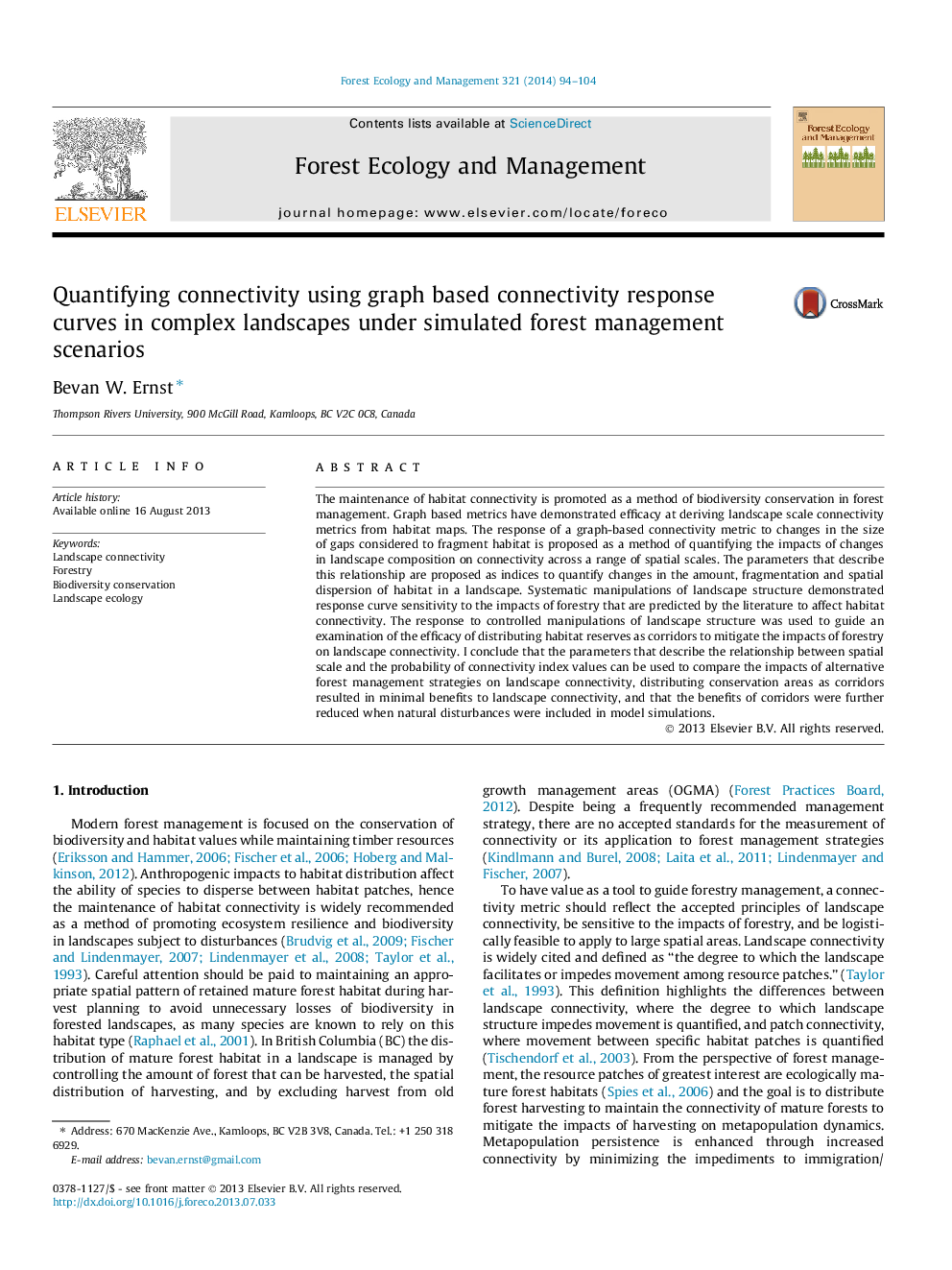| Article ID | Journal | Published Year | Pages | File Type |
|---|---|---|---|---|
| 86477 | Forest Ecology and Management | 2014 | 11 Pages |
The maintenance of habitat connectivity is promoted as a method of biodiversity conservation in forest management. Graph based metrics have demonstrated efficacy at deriving landscape scale connectivity metrics from habitat maps. The response of a graph-based connectivity metric to changes in the size of gaps considered to fragment habitat is proposed as a method of quantifying the impacts of changes in landscape composition on connectivity across a range of spatial scales. The parameters that describe this relationship are proposed as indices to quantify changes in the amount, fragmentation and spatial dispersion of habitat in a landscape. Systematic manipulations of landscape structure demonstrated response curve sensitivity to the impacts of forestry that are predicted by the literature to affect habitat connectivity. The response to controlled manipulations of landscape structure was used to guide an examination of the efficacy of distributing habitat reserves as corridors to mitigate the impacts of forestry on landscape connectivity. I conclude that the parameters that describe the relationship between spatial scale and the probability of connectivity index values can be used to compare the impacts of alternative forest management strategies on landscape connectivity, distributing conservation areas as corridors resulted in minimal benefits to landscape connectivity, and that the benefits of corridors were further reduced when natural disturbances were included in model simulations.
